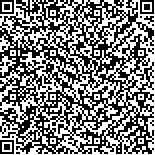朱毅,杨雨洁,郭佳宝,等.电针对骶髓损伤慢性尿潴留大鼠膀胱Cajal间质细胞的调控作用[J].中华物理医学与康复杂志,2025,47(6):487-494
扫码阅读全文

|
| 电针对骶髓损伤慢性尿潴留大鼠膀胱Cajal间质细胞的调控作用 |
|
| |
| DOI:10.3760/cma.j.cn421666-20240920-00772 |
| 中文关键词: 脊髓损伤 膀胱 尿潴留 电针 |
| 英文关键词: Spinal cord injury Urinary bladder Urine retention Electroacupuncture |
| 基金项目:国家自然科学基金(81403477) |
|
| 摘要点击次数: 1571 |
| 全文下载次数: 1275 |
| 中文摘要: |
| 目的 观察电针对骶髓损伤慢性尿潴留大鼠尿动力学的影响,并探讨其对膀胱Cajal间质细胞(ICCs)的调控作用。 方法 将75只雌性SD大鼠随机分为假手术组、模型组、电针组、抑制剂组、抑制剂加电针组,每组大鼠15只。实验第1天,模型组、电针组、抑制剂组、抑制剂加电针组建立骶髓节段(对应腰3椎体水平)完全性损伤模型,假手术组仅暴露L2-4的棘突和椎板后直接缝合,不做损伤处理。实验第16天,抑制剂组和抑制剂加电针组均给予甲磺酸伊马替尼腹腔注射,电针组和抑制剂加电针组则给予电针干预,连续干预14 d。实验第30天,5组大鼠均进行尿动力学检测,然后处死,再采用苏木精伊红(HE)染色观察其膀胱形态学改变;采用透射电镜观察膀胱ICCs的超微结构和数量;采用实时聚合酶链式反应(RT-PCR)和免疫蛋白印迹法(Western Blot)检测膀胱c-Kit、干细胞因子(SCF)基因和蛋白的相对表达,采用Western Blot检测膀胱c-Kit磷酸化蛋白(p-c-Kit)的相对表达。 结果 实验第30天,模型组和抑制剂组的排尿率、残余尿量、膀胱容量和顺应性与假手术组比较,差异均有统计学意义(P<0.05)。电针组的排尿率为(64.36±6.73)%,与模型组比较显著升高(P<0.05),且电针组的残余尿量、膀胱容量和顺应性较模型组则显著降低,差异均有统计学意义(P<0.05)。与电针组比较,抑制剂加电针组的排尿率显著降低,残余尿量、膀胱容量和顺应性则显著升高(P<0.05)。实验第30天,与假手术组比较,模型组和抑制剂组膀胱逼尿肌的组织形态和ICCs的超微结构有异常改变,ICCs的数量也显著减少(P<0.05),c-Kit、SCF、p-c-Kit的相对表达均显著降低(P<0.05);与模型组比较,电针组膀胱逼尿肌的组织形态和ICCs的超微结构均有明显改善,ICCs的数量则显著增多(P<0.05),c-Kit、SCF、p-c-Kit的相对表达均显著升高(P<0.05);与电针组比较,抑制剂加电针组膀胱逼尿肌的组织形态和ICCs的超微结构的破坏更为明显,ICCs的数量也显著减少(P<0.05),p-c-Kit的相对表达则显著降低(P<0.05)。 结论 电针可显著改善骶髓损伤慢性尿潴留大鼠的尿动力学,其作用机制可能与电针可通过膀胱c-kit/SCF信号系统良性调控ICCs有关。 |
| 英文摘要: |
| Objective To observe any effect of electroacupuncture on the urodynamics of rats modeling chronic urinary retention after a sacral cord injury (SCI), and to explore its regulatory effect on interstitial Cajal cells (ICCs) in the bladder and the mechanism. Methods Seventy-five female Sprague-Dawley rats were randomly divided into a sham operation group, a model group, an electroacupuncture group, an inhibitor group, and an inhibitor plus electroacupuncture group, each of 15. On day 1 of the experiment the sacral spinal cord was completely transected at the level of the 3rd lumbar vertebra in all groups except the sham operation group. In that group the spinous processes and laminae of L2-4 were exposed but not injured, and then sutured. On day 16, both the inhibitor group and the inhibitor plus electroacupuncture group were given intraperitoneal injections of imatinib mesylate, while the electroacupuncture group and the inhibitor plus electroacupuncture group began 14 consecutive days of electroacupuncture. After the intervention, urodynamic testing was performed on the rats in all five groups, and they were then sacrificed. Hematoxylin-eosin staining was used to observe any morphological changes in the bladder. Transmission electron microscopy was employed to assess the ultrastructure and quantity of ICCs in the bladder. And the gene and protein expression of c-Kit and stem cell factor (SCF) in bladder tissue were detected using polymerase chain reactions and western blotting. Western blotting was also applied to detect the relative expression of c-Kit phosphorylated proteins. Results Compared with the sham group, the model and inhibitor groups showed significant differences in their urination rates, residual urine volumes, bladder volumes and compliance on the 30th day of the experiment. Compared with the model group, the rats who received electroacupuncture displayed more complete voiding, lower residual urine volume, greater bladder volume and better compliance. Compared with the electroacupuncture group, the urodynamic evaluation of the inhibitor plus electroacupuncture group indicated a significant decrease in urination rate, but a significant increase in residual urine volume, bladder volume and compliance. The SCI modeling had destroyed the morphology of the bladder detrusor muscle and the ultrastructure of the ICCs. And the number of Cajal interstitial cells and the relative expression of c-Kit, SCF, and p-c-Kit had decreased significantly. Compared with the model group, a significant improvement was observed in all urodynamic indicators, the morphology of the detrusor muscle, the ultrastructure and number of ICCs, and the relative expression of c-Kit, SCF, and p-c-Kit in the electroacupuncture groups. There were poorer urodynamic indicators, detrusor muscle morphology, ultrastructure and number of ICCs in the inhibitor plus electroacupuncture group compared with the group which received electroacupuncture alone, but there was a significant decrease in the relative expression of p-c-Kit. Conclusions Electroacupuncture can improve the urodynamics of chronic urinary retention after sacral cord injury, at least in rats. The mechanism may be related to the benign regulation of ICCs through the bladder′s c-kit/SCF signal system. |
|
查看全文
查看/发表评论 下载PDF阅读器 |
| 关闭 |
|
|
|